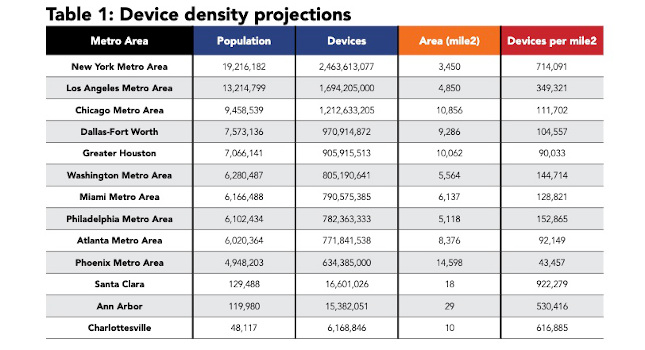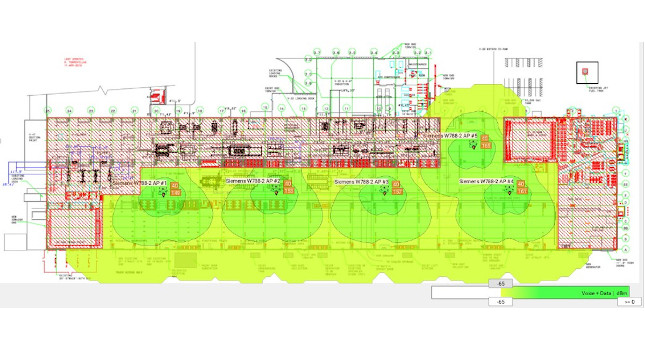Requirement for I&E tech to be onsite for well workovers reduced from five hours to 15 minutes.
Natural gas well workovers extend production from a few years to decades. Not only do they extend and improve total production capacity, workovers also provide an opportunity to make repairs and upgrades. Workovers require coordination among company personnel, outside contractors and equipment suppliers—and often must be performed in harsh winter environments (Figure 1).
Gulfport Energy operates 330 natural gas wells in Eastern Ohio, and each of these wells has had or will have a workover. A typical well runs unassisted for 18 months to five years; a workover is then performed to add plunger lift assist, extending production for another 15 to 30 years.
Each workover requires the disconnection and reconnection of five pressure instruments. If all goes well, this process typically takes four to six hours, but often much longer due to issues with disconnecting and reconnecting wired instruments. Since upgrading from wired to wireless instruments, the workover time has become much more predictable, and the time required for an instrumentation and electrical (I&E) tech to be onsite has been reduced from five hours to 15 minutes.
Planning a workover
Each well is 16,000 to 24,000 feet long, including vertical and horizontal distance. Paraffin buildup can wreak havoc with well operation, and valving must work properly when killing the well. Waiting too long to workover a well and install plunger lift assist can result in water build-up in the vertical sections, which creates pressure. This pressure must be released manually to atmosphere to “unload the well,” a potentially hazardous operation that must be closely monitored, with pertinent data recorded.
Reservoir engineers monitor process data for each well, including water and gas flow rates and tubing and casing pressures. Based on this data, a decision is made to workover a well when production rates begin to decrease significantly.
Early in the life of a gas well, production rates and velocities are usually high enough to keep the well bore clear of liquid accumulation. Any liquids present are carried to the surface, entrained in the gas stream. The high turbulence and velocity of the gas easily lifts the liquids and the well produces at steady flow rates.
As the well ages, reservoir pressures decline, along with flow rates and velocities. The gas lifting characteristics change, and liquids begin to collect on the walls of the production tubing. Liquids still move up and out of the well, but less efficiently over time.
As gas rates and velocities continue to drop, liquids on the tubing walls that were moving upward begin to stall, restricting the flow of gas. When enough liquid accumulates, liquid “slugs” form.
At this stage of production, the reservoir still builds enough gas pressure under the liquid slugs to overcome the hydrostatic pressure and to force the slug back up the tubing. The gas expands, some of it carrying liquid and some slipping through the liquid. This carries much of the liquid out of the well bore, but it impedes the gas flow and causes a slower flow rate. The slugs can cause significant stress to downstream equipment.
Eventually the flow rate falls below a critical value because there is no longer enough gas pressure to carry the liquid out, and gas production is choked, killing the well. More direct measures are required to clear the well bore and maintain production, such as the plunger lift assist method used by Gulfport Energy.
Plunger lift systems emit no methane, use no consumable and require minimal power. The equipment consists of a plunger head assembly, also called a lubricator, at the top of the well. A local PLC holds and releases the plunger at the appropriate times. Various valves are needed, along with several pressure and temperature instruments, as well as differential pressure (DP) flow meters.
The action is simple. A plunger, sized to be close to but less than the diameter of the well tube, drops to the bottom of the well where it lands on a bumper spring. The well then is shut off at the top, allowing pressure to build up. When the pressure is high enough, the well is opened and the pressure can push the plunger up the tubing, lifting the liquid above it and freeing the gas flow so production can resume. The plunger is captured when it pops out and is retained until the water column eventually reforms, and the entire cycle repeats. The clearing cycle may run several times per hour on some wells.
The plunger lift system is installed during a workover but issues often occur when disconnecting and reconnecting instruments.
Workover issues
Each workover requires disconnection and reconnection of five pressure instruments. These instruments measure the following pressure parameters, with each dependent on the well conditions and location:
- Tubing pressure, 130-1,000 psi
- Casing pressure, 130-1,200 psi
- Surface casing pressure, 1-600 psi
- Intermediate casing, 1-2,800 psi
- Flowline pressure, 1-1,000 psi.
Using conventional wired instrumentation, a crew can workover two wells per day with a six to eight-person crew consisting of a Gulfport Energy production foreman or superintendent and contractor I&E techs. This assumes everything goes as planned with no unforeseen issues, but this is often not the case.
Contractor I&E techs need to pull fuses, disconnect wiring and remove cabling before a workover—and reverse that work after the workover. They typically spend five hours on site to do 15 minutes of work, and mistakes and damage often go unnoticed. The four to six hours budgeted for a workover can therefore turn into a full day or more, with contractors on site and billing the entire time.
Damage to instrument cabling is quite common due to pinching or breaking of the wiring within a conduit (Figure 2). This often is unnoticed until a well is brought back online, frequently requiring the well to be put back offline for repairs. This adds to workover hazards and increases the time and money required for the operation.
A better solution was needed to eliminate the wired instrument reinstallation issues, ideally by eliminating wiring.
Upgrading to wireless
After evaluating various wireless instrument solutions, Gulfport Energy implemented a WirelessHART pressure and temperature instruments in 2014 (Figure 3). Prior experience with wired instruments had been positive in terms of reliability and performance, with the only issues being those related to wiring during workovers. Wireless instruments were installed on all new wells, and were retrofitted onto many existing wells.
Each wireless instrument communicates to a gateway equipped with an antenna (Figure 4). The instruments and the gateway form a WirelessHART mesh network, ensuring reliable communication. The gateway is connected to the local PLC via a hardwired Ethernet Modbus TCP/IP data link.
The PLC communicates with a central control room via a cellular network to create a supervisory control and data acquisition (SCADA) system. This system allows each well to be monitored and controlled remotely, which is critical because all the wells are unmanned and can operate for months between site visits.
With wireless, there are no longer fuses, conduit or wiring between the PLC and each instrument. This eliminates the need to do electrical wiring work before and after the workover. The instrumentation simply stays on the wellhead equipment, and contracted I&E techs are no longer needed for a workover. The only maintenance is battery replacement, and battery life is more than five years.
Cost savings enabled Gulfport Energy to eliminate I&E contractors and hire two fulltime I&E techs to improve operations. More importantly, exposure to potentially hazardous conditions at well sites has been reduced.
Summary
Due to success with wireless pressure and temperature instrumentation, Gulfport Energy is now using WirelessHART instruments to monitor water and condensate tank levels (Figure 5).
Gulfport Energy also is using discrete wireless transmitters to communicate the activation of field-mounted remote E-stop pushbutton to the PLC. This allows onsite personnel to shut down a well’s operation from a distance, critical if a problem occurs because hazards increase with proximity to the well.
Tubing, production casing, intermediate casing and surface casing pressure measurements using wireless instruments are being explored, along with other diagnostic measurements, to monitor conditions remotely via the SCADA system. R&D testing is another application well-suited to wireless instruments due to their ease of installation in temporary setups.
A workover is like a small-scale turnaround. It can be quick and inexpensive, but disconnecting and reconnecting instrument wiring is costly and risky. By upgrading to wireless instruments on old and new wells, Gulfport Energy saved time, lowered costs and reduced worker exposure to hazards.



